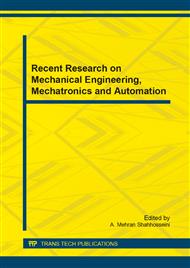p.184
p.190
p.197
p.209
p.214
p.219
p.224
p.230
p.239
Study of the Effect of Borehole Size on Wellbore Stability
Abstract:
Based on the size effect of rock strength, the borehole stability analysis model is established, which the borehole size is taken into consideration. Through this model, the relation between borehole size and collapse pressure under borehole pressure, ground stress and drilling fluid flow function is analyzed. The analysis shows that with the increase of borehole diameter, collapse pressure increases significantly, and borehole stability becomes poor, but the variation of borehole size is not proportional to collapse pressure: the bigger the borehole, the smaller the variation. When borehole diameter increases from 152.4 mm to 444.5 mm, wellbore collapse pressure increases from 1.18g/cm3 to 1.315g/cm3 and the rate of the increase is 11.44%. When slimhole drilling technology is applied, the density of minimum fluid that maintains wellbore stability is lower than the one used in conventional wellbore drilling.
Info:
Periodical:
Pages:
214-218
Citation:
Online since:
July 2014
Authors:
Keywords:
Price:
Сopyright:
© 2014 Trans Tech Publications Ltd. All Rights Reserved
Share:
Citation:


